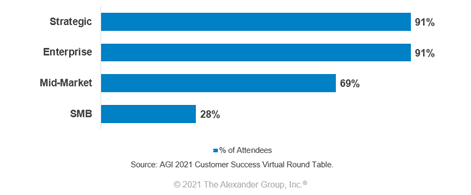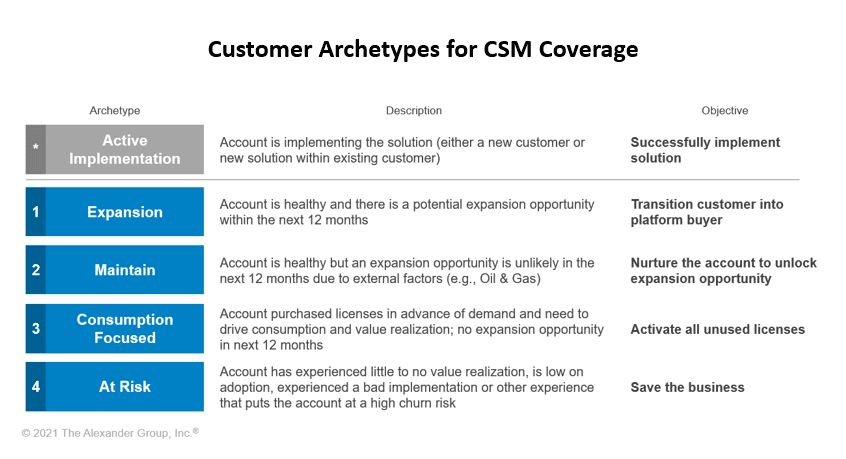XaaS Customer Success Managers Part II: Deployment
How best to deploy CSMs – that is, how to ‘assign’ them – by segment, account, seller, team or pooled.
Part I of this three-part series discussed the different types of customer success managers (CSM) jobs. It highlighted ways in which the Customer Success team is critical to helping customers realize value from their solutions, and reinforced the notion that happy customers that realize business value will continue to renew (not churn or downgrade) and buy more. CSMs are thus critical in creating customer ‘stickiness’ and increasing customer lifetime value (CLV).
Part II will discuss how best to deploy CSMs – that is, how to ‘assign’ them – by segment, account, seller, team or pooled (i.e., CSMs deployed based on availability and assigned to opportunities as they arise). Much like the wide range of ways in which organizations use CSMs across the sales process outlined in Part I, the deployment models vary. Increasingly, companies are deploying CSMs based on several customer archetypes and defining the desired outcome based on the account need and stage of development. These customer archetypes are closely aligned to the four CSM archetypes discussed in Part I.
CSM Deployment
During a recent Alexander Group Customer Success virtual roundtable, attendees were asked to identify the segment(s) against which they deploy CSMs. Not surprisingly, virtually all participants deploy a CSM at the strategic and enterprise segment. While definitions of strategic and enterprise will vary across companies, cutoffs based on annual recurring revenue (ARR) spend and/or number of user or deployed licenses are most common.

At the strategic or enterprise segment, CSMs are typically assigned or paired with sales reps in a one-to-one (largest, most strategic accounts) or one-to-many fashion. Ratios of sales rep to CSM vary in part due to account size and complexity, but these two segments typically range from 1:1 up to 5:1. This level of relatively dedicated coverage ensures that the CSM can maximize time they spend in supporting the upsell, cross-sell and renewal motions.
At the mid-market or SMB segments, most companies will increase their reliance on tools and technology to provide a scaled, proactive touch. Given that the CSMs working accounts in these segments will support a larger number of sales reps, and thus accounts, depth and frequency of involvement is limited. Not surprisingly, the number of organizations that currently provide CSM support at these segments is lower. However, over the years, companies are increasingly providing some level of CSM support at the lower segments. Nearly 70% of the participants at the roundtable provided some level of CSM deployment for mid-market customers. Just five years ago, few companies, if any, were providing CSM support below the enterprise segment.
More recently, several companies are shifting from purely static segmentation based on ARR spend, as outlined above, to a more dynamic one that includes spend potential and relevant use cases, lifecycle and position on the maturity curve. With these parameters in mind, it’s possible to classify customers into four archetypes for CSM coverage. The aim of the model is to provide the correct coverage, at the correct time, while minimizing resource requirements when they aren’t necessary.

This level of sub-segmenting accounts leads to ‘smart’ use, or deployment, of CSMs. It highlights that a homogenous approach is inefficient. The rationale behind identifying archetypes is that companies can use account health scores to fine-tune the success objective at that point in time for that customer. As a customer transitions in and out of these archetypes, the deployment decision follows. This type of flexible, typically pooled coverage and deployment model best allocates the scarce resources to where and when they are needed.
Traditional ways of segmenting customers (primarily by ARR spend) to determine the level and type of CSM support remains common practice. However, companies are increasingly evaluating ways to classify customer needs across the lifecycle and respond in kind with just the right CSM sales motion.
Stay tuned for Part III of this series on compensating CSMs.
Questions & Next Steps
The Alexander Group provides consulting services to companies building out their Customer Success organizations. For more information, visit Alexander Group’s Technology practice or schedule a complimentary briefing with one of our technology practice leaders.

